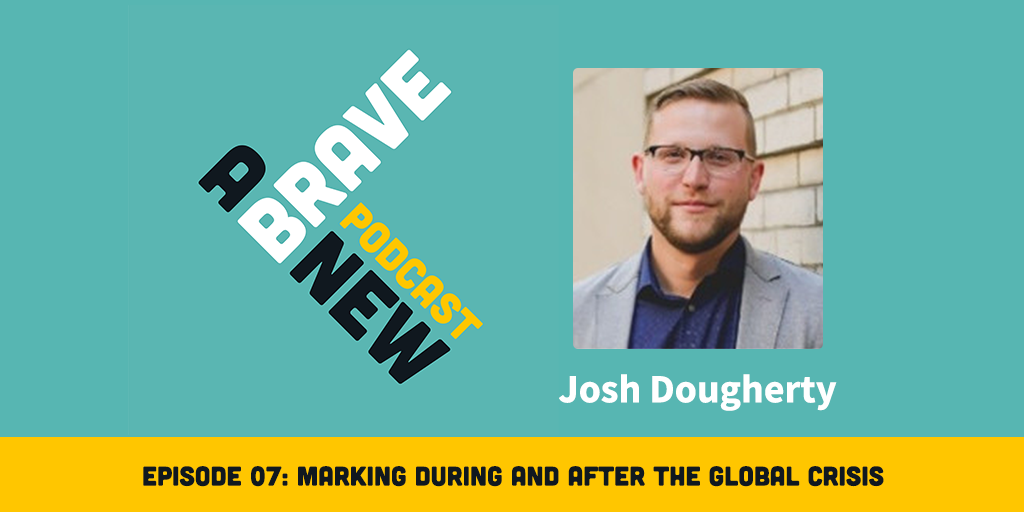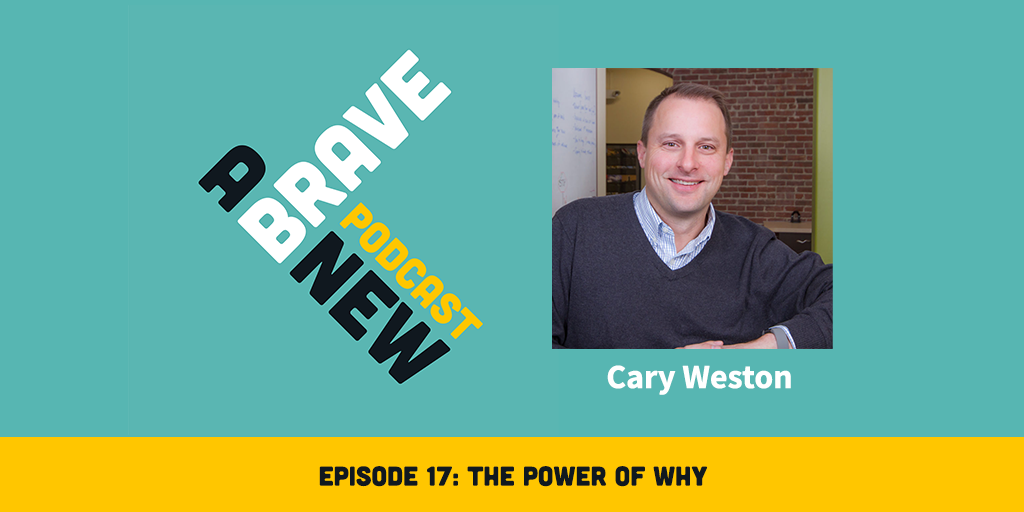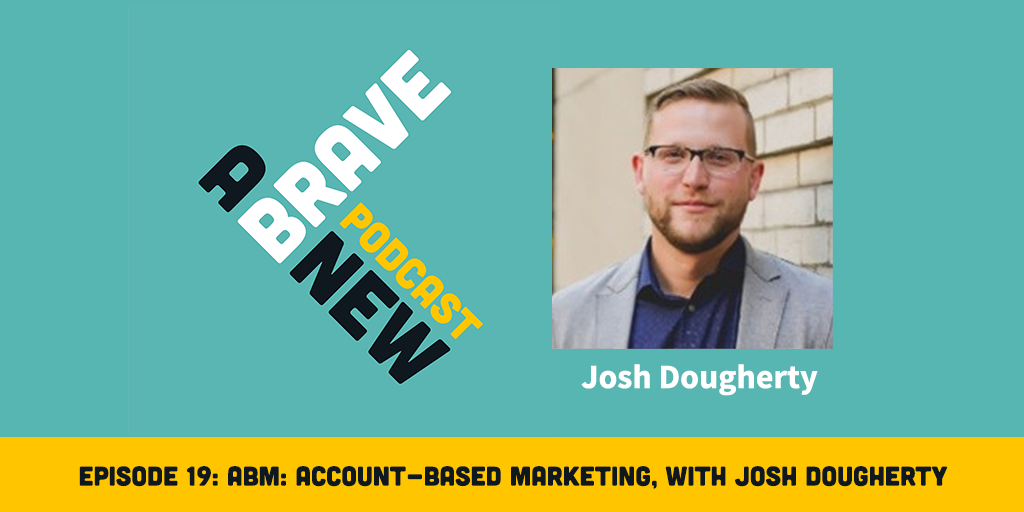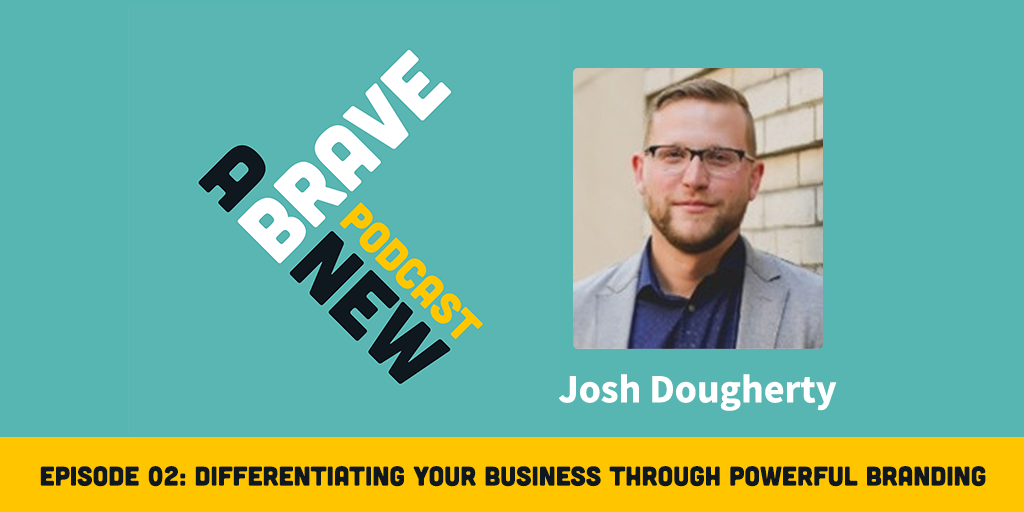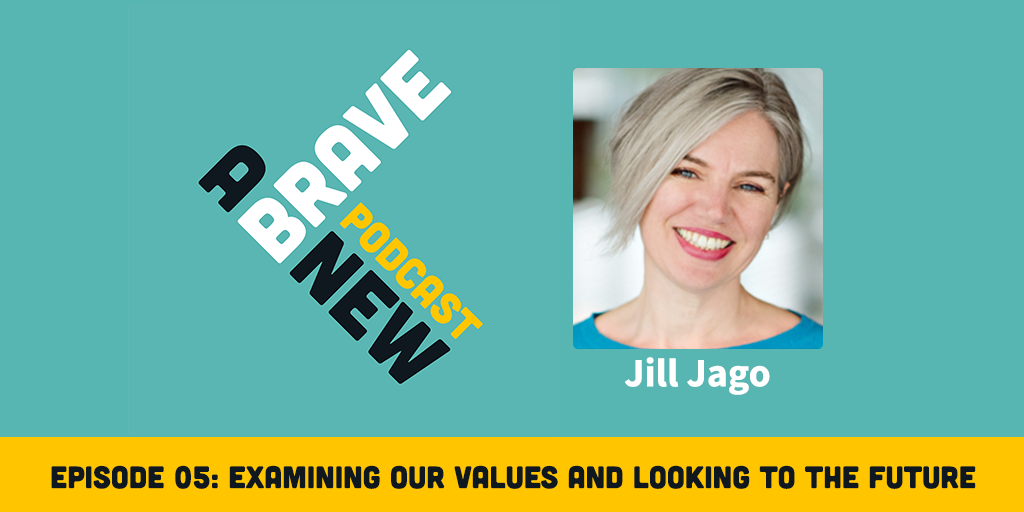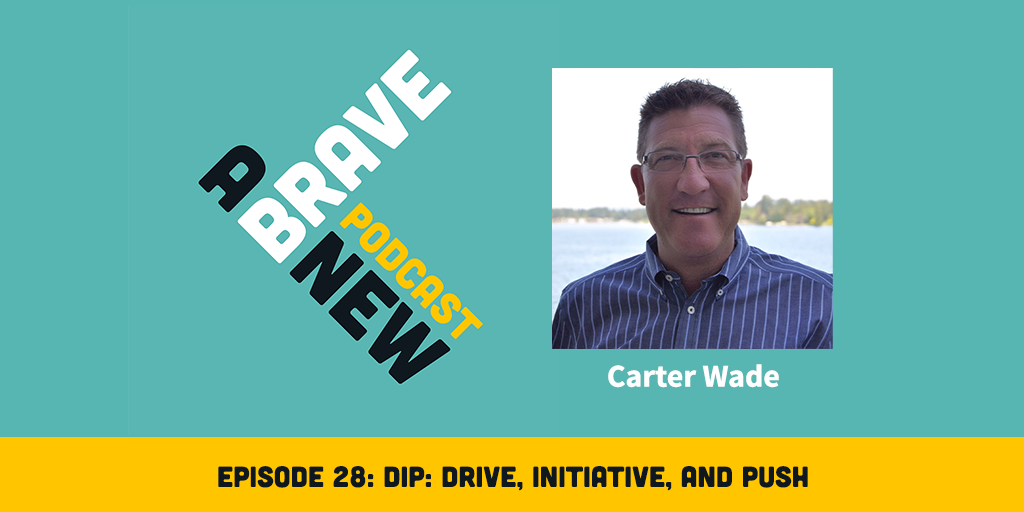Polly Yakovich is Co-founder and Chief Strategist at A Brave New, a Seattle digital marketing agency focused on helping businesses accelerate their growth through inbound marketing, branding, and web design. She specializes in working with clients to identify barriers to their growth and overcoming them with strategic content and marketing tactics. She has more than fifteen years of experience in digital marketing and branding.
What you’ll learn about in this episode:
- Why the key to effective direct response marketing lies in being tactical, ruthlessly disciplined, and laser-focused on results
- Why direct response marketing should be based on knowing your audience through data only, and why real action today matters more than future aspirations
- Why you should measure only what matters, and how to identify the right metrics that matter to your business
- How to continue building off what your metrics tell you is already working, and why it is important to stick to a single CTA (call to action) in your marketing
- Why asking again and again with the same CTA is more impactful than changing your messaging, and why direct response is very honest about human behavior and accepts humans as they are
- Why direct response works well in tandem with inbound marketing, and how to use the SMART approach to begin incorporating direct response marketing
Additional resources:
- A Brave New’s website: www.abravenew.com
Show Transcription:
|
Intro: |
Welcome to A Brave New Podcast, the podcast all about how brave entrepreneurial companies are unlocking their business potential using inbound marketing. Here is your marketing expert and host, Polly Yakovich. |
|
Polly Yakovich: |
Welcome back. Today, I'm going to talk about something that most inbound content marketers strongly dislike and this is something that Josh and I, my co-founder we actually for a long time felt like this was our little dirty secret and we were kind of embarrassed about our background but as we have come along in our careers and run a business for several years, we have really found that we lean on some of these tools more than any other. |
|
I really wanted to spend some time unpacking them with you today, and that is direct response or direct marketing and for a lot of people, direct response is super old school. It's gauche. It's pushy. It's telemarketing. It's political fundraising, which we've all been seeing a lot of this year, and nobody thinks they like it but the dirty secret about direct response is its super effective for a bunch of reasons. |
|
|
I'm going to run through six of these core reasons with you today because I think that for all of us and I noticed this particularly, I think I have become one of those people, but I noticed this particularly with younger marketers is they've kind of come up in this later school of pure content and inbound and educational stuff and it's great. |
|
|
It's all aimed at helping your audience and it can work really well, but sometimes they're just missing that little extra thing that can put them over the top. There are some really core principles about direct response that I think are true for any marketer and are really important not to lose sight of, even when you're trying to be helpful on educational and all of those things. |
|
|
In addition, we have developed a really cool resource that you can check out on our website, abravenew.com, and you can download. It's really covering this exact topic I'm going to talk about today, but you can take it with you, and you can look at those principles, and you can apply them to your everyday work. I think what I'm going to talk about today can be applied to any marketing. It doesn't mean that these tactics should be used in every single channel, in every single instance you're talking to your customer, consumer, but they can be used everywhere. |
|
|
Direct response marketing for both Josh and I, and we first learned this actually on the nonprofit side, which is really super interesting. For anyone who thinks that nonprofit marketers are not as savvy and sophisticated as others, I would challenge you to try to sell a product to someone in which they get nothing in return besides feeling good about themselves or positive about their contribution in the world, and then come back and tell me how easy nonprofit marketing is. |
|
|
Direct response marketing taught us some things that I think inbound or content marketing often glosses over, and that is to be tactical, to be ruthlessly disciplined, and then laser focused on actual results. Josh and I really try and infuse these principles into everything we do. There are some detail into that I'll get into later. Really truly, the goal of any direct response marketer is not to be creative. It doesn't mean you can't be creative, but it's not the goal. It's not to be clever. It's not to create something that is going to win a Clio or an ad. |
|
|
The goal of direct marketing is to be effective and being effective for most people is getting your audience to do what you want them to do. What you've asked them to do, what you're inviting them to do, taking the action you want them to take. And so really direct responses, just laser focused on being effective. And here are six ways that you do that. Direct response talks about knowing your audience through data only. |
|
|
Data reveals things about people's behavior and that is primarily what they're actually going to do. What actions they've taken in the past are the most predictive of actions they'll take in the future and so in direct response marketing, it doesn't really matter what your audience aspires to do or what they say they're going to do or what they're planning to do. |
|
|
It doesn't really matter if they're interacting with your content, stay with me because obviously there's some caveats there, but what matters the most is what they do or what they have done, because if they've done it in the past, they might do it again. Gallup will say organizations that leverage customer behavior data to generate behavioral insights, outperform their peers by 85% in sales growth and data is the reason I'm super skeptical. |
|
|
Even of some of the really good research that HubSpot puts out at the beginning of the year. I'm super skeptical when people put out research about what people say they want to do or are going to do because we are human and humans are why the aspirational about our goals. And when you look at what you want to do, I want to run a marathon and serve on a bunch of boards and volunteer for all these nonprofits and what I actually do. |
|
|
My behavior usually doesn't match what I think about myself or what I want to be right and this is true of everyone. You don't have to spot marketers at the end of the year or the beginning of the year. Like, what things are you going to do more of next year? This is partially aspirational, right? Oh, I'm going to do 10 videos every month for all of my clients, because video is such a hot channel and video content is growing so exponentially. |
|
|
Part of that is interesting, but until you actually see what people do, you don't actually know. When I am hearing about survey results, I'm always very dubious about like, is this actually based on data, is this based on behavioral data actions that people have taken? I do also have an additional example from nonprofit days, but back in the day, a bunch of research came out and it was super compelling about what donors wanted. Right? |
|
|
Donors wanted all these things and then they would be better Donors. They would give more, they would do the things you wanted them to do, but you're not treating them well and these are the things that I wanted. One of the things they wanted is to be thanked for a gift after they made a donation before they were asked again. |
|
|
On the surface of things, that makes perfect sense. I mean, it just is kind of, I'm going to acknowledge your gift before I'm going to ask you to give again, however, for most nonprofits who raise a lot of money from smaller donors, $25 here, or there $30 here or there, they sent out receipts for those gifts, that thing to the donor. And then they also included a little slip at the bottom so they could save it and send it the next day. |
|
|
I worked for an organization and the directors development was swayed by this compelling research and set in me, take the return receipt off all of our receipts. We're going to just purely thank people. We're going to give them a thank you. Not going to ask them for anything else and we are going to just thank them. I was like, please, please, please, please, please times pleases testing do not do this because people say they want it but people that make small donations use that as their reminder, right? |
|
|
This is getting into like older generations behavior but a lot of us probably still do this is they would get their receipt. They would read the note and then they would clip off the bottom to put with their bills and send in their next gift. Right? So without testing this, they decided just to roll it out based on great research and donations, because so many people were used to this common behavior. |
|
|
They didn't have anything to send back in. So they did it. And they were used to responding that way and not opening other pieces of mail that they might've gotten from the organization. So they just missed. So this is one small example of like, it is really important. Also, this is why it's important to test things, but it's really important to know your audience, your data. |
|
|
People are always going to say things that are aspirational and you need to know what they've actually done, what they're going to do and test it. So that was a long-winded. I won't spend as much time on each one, but the second one is to measure only what matters. So when you measure only what matters, you really get to the core of what's working, right? And this kind of reminds me of the old Pareto principle, which is like 20% of the things that you're doing or achieving 80% of the impact. |
|
|
And 80% of the things you're doing are achieving a little like 20% of the impact, right? So you're just doing a lot of stuff that doesn't matter. This is true in marketing as well but one of the things that I think marketers struggle with is getting really dialed in on the KPIs, key performance indicators or metrics that matter. Right? |
|
|
I agree before you send me a lot of angry letters. I agree that all of these metrics add up to something, right? Web sessions is interesting because you want to see how many people you're converting from that and you want to see what levers you have to pull and if you can keep hold of your conversion rates and increase your web sessions, and you have a chance of more conversions, et cetera. Every metric has its place, but there's a lot of metrics that really don't matter. |
|
|
As much as the one you should be caring about the most, which is how many sales were made, how many conversions happened, how many desired actions were taken, right? And so I think marketers tend to drown people in information, but you get so caught up on reporting everything that you're not looking at, like really measuring a little matters and looking for the levers that change what matters first and most. |
|
|
I really liked this quote from Seth Godin. He says, any metric you can buy your way out of is probably not a useful metric and measure yourself by the helpful metrics are the ones where cash isn't the solution. So if you can buy a bunch of impressions by just spending more, which you can, then you should not be really saying you're doing a great job because you've gotten a ton of impressions and you have a lot of each, you need to be looking for the conversions, the sales, you need to be starting with the core piece that you want to get. |
|
|
And working back from that and the more important thing for you as a marketer is that getting lost in all of the numbers can make your work really misleading and they can make your marketing appear more successful than it really is. So you need to know really what metrics to dial in and what levers you have to pull and how that works together. |
|
|
The third one, the third core principle of direct response is to build off of what's working. Most people in direct response do not recreate things just to recreate them. It's not like this is a new year and we need a whole new thing. Instead, we figure out what worked before and repeat it because of a lot of reasons that all of us know as marketers, people don't remember, people are inundated. People don't see things unless they've seen them multiple times. |
|
|
Sometimes you're updating certain things to make it season specific, or you have a new offer, et cetera but primarily direct response looks at what's performing the best and then does it until it starts to fade. Along the way, testing, you're tweaking some components whether you have that thing. That's always going to be coming up to be the outperforming thing, but built off of a core product of what's working because the best predictor of what will work in the future is what's worked in the past. |
|
|
Obviously if you test somebody who didn't work, you don't have to do it again, but people just are not paying that close of attention and to be totally honest, sometimes you would be better off sending the same email multiple times without even touching it or reworking the headline than you would to like spend all the time and effort and labor or rewrite of emails. |
|
|
So direct marketers repeat proven tactics until they start to fade and Neil Patel talks about this, the magic of the conversion rate, you optimize, what's already there and you create more profits from your existing customers to traffic, right? And this doesn't mean that you're not filling the funnel, but this is true of everything. You build off of what's working, you run the same ad until it starts to fail. |
|
|
You get more out of the people who already love you until you've maxed them out. Right? So another thing principle number four is to ask for one thing, and this is super hard, especially when you have a complex product or you're really interested, or you want to give them options. I hear this a lot because everyone wants to give people options, right? Everyone wants to give people options until you think through how you are consuming content, right? |
|
|
If you're going to LinkedIn or you're getting an email, or you were spending the fraction of a second of attention, you have on someone, who's trying to get ahold of you. You don't take in all information, nobody is reading. This is another thing. Nobody is reading your material front to back. Maybe eventually they do. When they come to understand you more, but people are reading your email word for word they're scanning for "What's in it for me. Why should I do anything with this? Is this important or helpful to me?" |
|
|
Direct marketers, stick ruthlessly to one message at a time and then communicate it clearly and let the audience know what they want them to do. They tell them the consequences of an action. They described the benefits of action. It's as simple as that, it takes a lot of discipline to stick to a single call of action, because we really want to give options. |
|
|
It's almost impossible to stop ourselves from doing this. This is where you do have to be like a robot when you're enforcing this rule, because you're super tempted to throw in life but here's the link to my scheduler. If you also want to talk to me and I'm totally available to you, but I've actually asked you to download this PDF or a one sheet or a sales enablement tool or whatever it is. So stick to that. |
|
|
Multiple options tends to have a paralyzing effect. You're already going to struggle to capture people's attention. They're busy, everyone's busy. They have a lot going on. They're interacting with your thing. You just want to make it frictionless and easy for them. If you give them options, even if they like you, it's like, Oh, should I talk to her? Or should I download the thing? |
|
|
I don't know. I'll come back to it later and then they never do. So you want to capture people's attention where they are right there. The single thing, get them there, deliver on that. And then move on. From that, WordStream says that emails with a single call to action, CTA increased clicks by 371% and sales by 1617%. So that's pretty compelling data. And then that also leads into the next point, which is to ask again and again. |
|
|
Direct marketers will tell you to keep repeating your call to action until it starts to feel a little bit awkward. It gets easier when you are realizing that people are just scanning, because you're going to be asking for one thing, you're going to be asking for that one thing several times, and it's going to feel a little bit weird, but when you realize that people are just, glinting in your email, saw the thing in the front interesting. |
|
|
Oh, here's that link again? Okay, cool. I guess they want me to click on that, looking down to the bottom. There's that again? Okay. I'll follow through. They're like laser focused on that and I'm going to see what that's about. The other thing is like, people really don't necessarily pay attention. If they are reading your material, they're kind of scanning your content. They're seeing what it's about. They're not really noticing it the way you are. |
|
|
You really, one of the other things I always used to say as a direct marketer is, I rely on my audience to tell me what they want. I don't read the material and say like, Oh, I didn't click on this because you're way too close to it. Right. You really have to think from the perspective of your audience, which is nearly impossible. |
|
|
Like I'm engaging with this rarely. They sent me a few emails this month, I'm going to open this one, and I had a glance at it a little bit. So you really do have to repeat again and again, your single asks so that people actually see it. And when in doubt, have you really remember that like business school marketing hula seven, which was that a prospect needs to hear your message at least seven times before they'll take action. |
|
|
Now, some say in this day and age, I think that marks any principle of seven. I mean, I was in business school 20 years ago and that was that. Probably the marketing will seven is like 77 now, which really just reinforces everything we talked about keep doing what's working stick to a single action ask again and again, people just don't notice, right? And you can version your things by like, maybe you're not going to a existing customer as direct response as they were to a prospect or someone in your pipeline, but you really need to approach it from that perspective. |
|
|
The sixth point I want to make is that direct response is very honest in a somewhat brutal way, but in a very honest way about human behavior, direct response, accepts humans as they are. I think research always wants humans to be aspirational and talk about who they want to be and what they might do and all of that is beautiful and good and has its place, but direct response, access humans as they are and works with them. |
|
|
They meet them where they're at. So direct response is just accepting. You're not going to spend that much time looking at my material. That's fine. I'm going to put my offer my single offer that I repeat several times and they get as easy on you as possible to play, right? This is also partly why as much as we kind of hate it. A lot of us, no matter your persuasion clicked on a lot of political advertising this last season and gaze to political campaigns, right? |
|
|
Political campaigns and direct response marketing are very brutal about human behavior. And as much as we want to be educational, thoughtful, decision-makers, we're not, we're emotional. We operate out of our lizard brain. We're impulsive. We're driven by all motivating factors, belonging, guilt, things like this and so direct response is very realistic about human behavior. You're not looking at my scene that much. You didn't notice that I sent this thing yesterday. I'm going to repeat myself until I get in front of you. |
|
|
Then the funny thing about that, I think is Margaret, isn't going to think like, Oh, that's lazy. I have to rewrite it. But the funny thing about that is people actually think that it's more important if you're repeating the same thing, they don't really necessarily think like, Oh, they're repeating the same thing. They must have lazy marketers. They're thinking, Oh, they're repeating the same thing. |
|
|
This must be Vita me. They're really trying to get my attention. I think really just accepting human behavior is really core to marketing and will help make all your marketing better. People, aren't going to read it from start to finish. They're going to scan it. They might click on it. That is something that I would really encourage you to do with all of your marketing is go back and look at it through your lens. |
|
|
When clients tell me we're posting on LinkedIn too often, and the messages are the same, I say, okay, well, think about your LinkedIn behavior, right? You're a busy professional, maybe executive. You go to LinkedIn now and then cause you should you see the top five things in your feed. You poke around a little bit and you're out, right? If you don't hit those top five, 10 things in your feed, you're not scrolling down for infinity. |
|
|
See like what some brand you might be interested in posted yesterday. You have to be top of mind, which requires a lot of content. And again, this is where it's affirming that that content has to doesn't have to be new and perfect and good. In fact, people talk about this all the time with social media, including Instagram. People, you really used to care about what their Instagram grid look like. Right? Do all the photos look good together in the grid? Do they match to, does it look like it's the same brand? |
|
|
I'm not saying be off brand. But the reality is that human behavior is that nobody really goes to the grid. They just interact with who's in their feed. They scroll through a little bit. They see what they see and they want, and we can get into lots of conversations about Instagram algorithms, which make people mad every day of the week. |
|
|
If you looked at LinkedIn or you looked at Instagram and you're accurate, then you're just hitting the highlights. You're hitting the stuff at the top. So this again is like, if you just accept human behavior and how people are interacting with platforms in different channels, you can make different choices about your marketing. |
|
|
I don't know if I freaked anyone out because this sounds like the opposite of what we typically say about content marketing and being really helpful and inbound marketing and being there when people need you and giving them all the information and letting them spend time researching you because people do a lot of research before they buy. |
|
|
This is where I want to say in some ways, opposites attract right with inbound marketing, content marketing and direct response. Inbound marketing is about helping your audience, right? Winning hearts and minds, by being radically helpful with perfectly timed content, building trust, being there, talking about purchases that take a long time and really building that foundation of trust. Why should you brace principles of direct response? It sounds like an either or decision. |
|
|
Here's why it's not, I think inbound marketing works, but pure inbound tactics aren't as effective at provoking action as they are about building engagement, trust all of those things that we have been talking about. Our experience with direct response marketing is that it works a lot better, whether you are doing both right, you have to be sort of at the tip of the sphere, getting people interested in doing that in the ways that we just talked about. And then as you draw them into your orbit, you're educating them. You're helping them. You're there when you need them. |
|
|
You're building trust. You're talking about how to use your product. So, pure inbound marketing is all about attracting your audience by being helpful and then waiting for them to take action and most brands just can't afford that. I think to be practical, you really need to implement both in the right places and you know, it's funny because as much as hotspot themselves, we'll talk about in the marketing, they do a lot of outbound stuff and they've spent many years doing direct response, cold calling telemarketing things like act to get customers, right? |
|
|
It really has to be a smart blend of both. I think with a new prospect of direct response makes the first move. It's about getting people to action. It's about spurring a decision and being really clear about it and then you can get better results from your inbound marketing program because you're drawing people in and you're giving them really great content and you're being really thorough. |
|
|
How do you incorporate direct response tactics into inbound marketing to start bringing direct response tactics into your marketing broadly? We like to use a smart approach. That is specific, measurable, actionable, relevant, and time bound. When you're making it specific, each piece of marketing collateral should focus on asking the audience to do one thing. |
|
|
Excess details cause confusion. Too many choices is going to sidetrack or paralyze your audience. Measurable is by deciding how your success is going to be measured, right? Defining what results look like and being ruthlessly focused on those metrics. Don't slide into impressions in website sessions, when you're really trying to increase the conversion rate from people who click on your demo to taking it because you know, if somebody takes a demo, I'm just talking from example. |
|
|
If somebody takes a demo they're likely to buy so you're going to really ruthlessly focus on getting people to do that demo. Actionable, your message should give your audience a good reason to take action immediately not to put it off and not to forget about it. Remember that their decision is going to happen in a split second. |
|
|
They're going to be making that quickly. Is this valuable to me? Don't make your call to action something like, Oh, when you get around to it, check us out. No, it's like, check us out today. This is the reason why you can't really lose time. Relevant is speaking to the needs of your audience and keeping your message benefit oriented in a way that appeals their emotions or some core motivators what's in it for them. |
|
|
And then time bound, try and try and get that OJT in there whenever you can, if they don't feel the need to act now, they probably never will. And so where right in our experience, the most powerful marketing combines the tactics and the non marketing and direct response. Here is where we bring that direct response into our programs to be most effective conversion emails. |
|
|
Whatever emails you're sending, like the example I talked about earlier, if it's a demo and you're trying to affirm that they're going to show up for the demo. Like you're really going to want to focus on these conversion emails, sales emails. That's a great place to be very direct response. At the end of the nurture pathways, right? When we talk about content generation lead generation through content gated content, they download the resource. |
|
|
You're sending them a series of emails. You're using these principles throughout while you might not be so forward until the end of the halfway, but you're still going to be using a single call to action and you're going to be relevant and time-bound. You're going to repeat yourself a lot in a smart way, in a nice way and then at the end of the nurture pathway, you need to make sure that those asks follow all the principles we talked about. |
|
|
Be very clear, be very direct, be driving them toward a single action. I also think landing pages is a really great place to be very direct response because you're asking them to do something. And so that entire landing page needs to be focused on conversion and that call to action. So timely single call to action, repeat it. Given lots of places to click. Don't let them escape. |
|
|
We always recommend on our landing pages that we even take the navigation out entirely, right? You don't want them to get lost, particularly if you've just paid to send them there from an ad, leave your logo up in the left corner so that they can get back to home and they can do what they want, but that you're constraining their options on that landing page. |
|
|
And then of course and ads. Ads is a place where you just really want to be laser focused on what you want them to do, you're paying for that audience. You want them to click, you're in a sea of other competition and you really need to stand up. Every time you leave your audience hanging or unsure of what to do next, you run the risk of losing them. So they may come remember to come back to you later, but they probably walked. So you need to make it a no-brainer to take action immediately. |
|
|
You really need to like strike while the iron is hot. And that's where you really can cut through the noise and make it radically easy for your audience to respond. You don't have to be awkward. You don't have to be pushy. You just meet them where they are, you accept their constraints and their human behavior and you design your communication with their challenges in mind providing them with a clear path forward. |
|
|
I promise you, you will see the results and this is why we don't think any inbound marketing program is complete without a little bit of that direct response in the right places at the right time. When in doubt, repeat your call to action again. This is where I say, thank you so much for listening. We did create a resource all about this. I think you'll really find it helpful. I have gone through really similar points today, but it's available on our website. You can go and download it. You can take it with you. |
|
|
I love to hear how you are incorporating these principles into your marketing efforts and I would really love to hear how that works for you. So visit abravenew.com and download that today. Thanks for listening. |
|
|
Outro: |
Thanks for listening to this episode of A Brave New Podcast. Go to abravenew.com for more resources and advice. If you enjoy this episode, show us some love by subscribing rating and reviewing A Brave New Podcast, wherever you listen to your podcasts. |
Similar Articles
OCT 11, 2021

The Beginner’s Guide to Generating Inbound Leads
Marketing doesn’t have to be painfully intrusive, like getting yet another telemarketing call right when you sit down to dinner with your family.
OCT 11, 2021

The Beginner’s Guide to Generating Inbound Leads
Marketing doesn’t have to be painfully intrusive, like getting yet another telemarketing call right when you sit down to dinner with your family.

